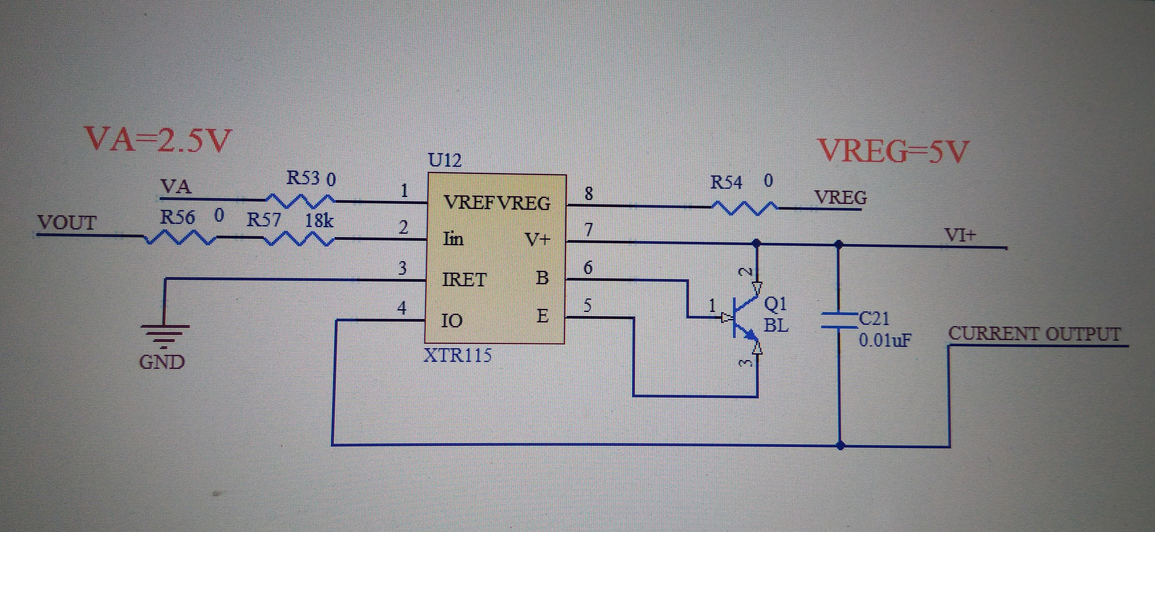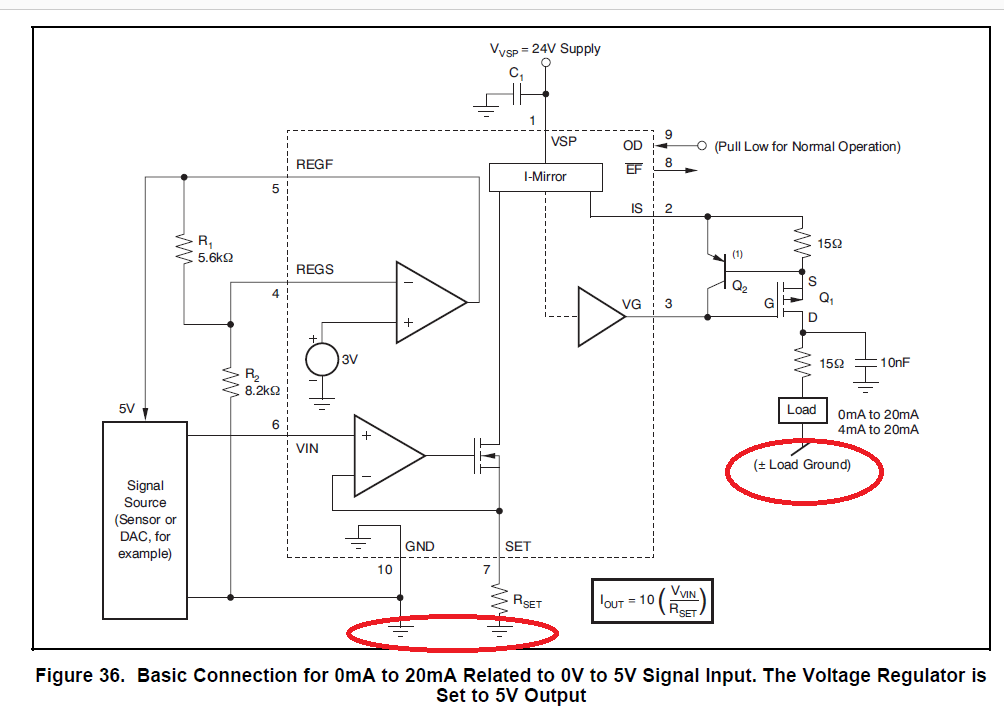Other Parts Discussed in Thread: XTR111
Hi team,
The customer uses XTR115. His schematic is in the attach. The input voltage is 0~3V.
The output voltage for VREF is 2.5V all the time. The output voltage for VREG is 5V all the time.
At the begin, the output current can meet IO=100*IIN. After a few minutes, the output current
cannot meet this formula.
Then he change another new XTR115 device, then the output current canmeet this formula.
Q1. What the input range is for XTR115? Can the 0~3V input voltage meet the input voltage range?
I note the datasheet shows "Common full-scale input voltages range from 1V and upward" on page 5.
Is the input range from 0~1V?
Q2. Would you check if the customer's schematic correct?
Q3. For the customer's issue, would you provide some suggestions?
Best Wishes,
Mickey Zhang
Asia Customer Support Center
Texas Instruments




